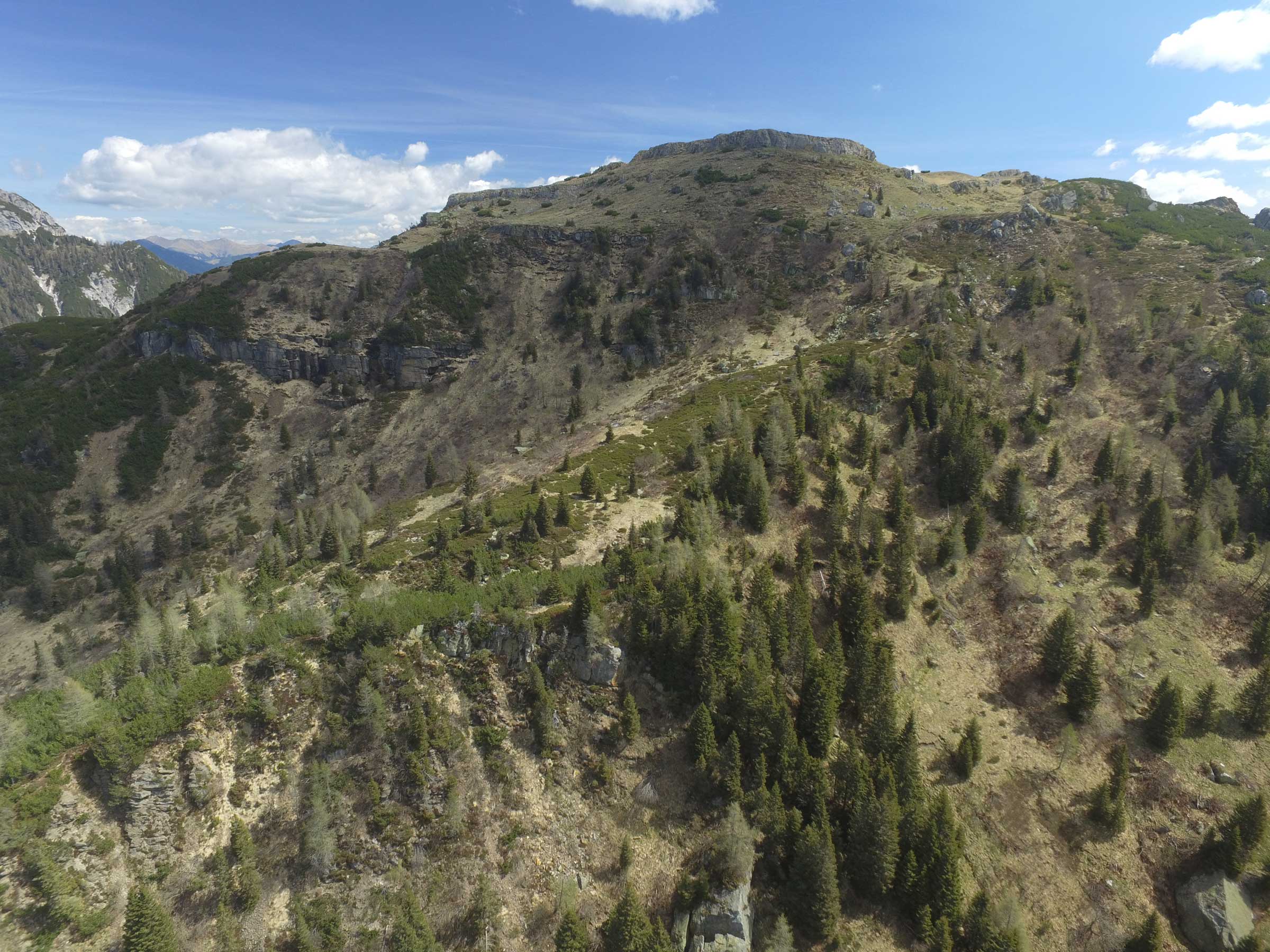This section crosses the sandstones of the Corona formation along the border area. The layers are rich in plant remains and represent an ancient delta plain environment.
A few ten meters north along the steep path, it is possible to see the only calcareous bank present on the 320 m of this formation. It is only 60 cm thick, and due to the alteration, it is yellow on the surface (but dark inside). A few millimetres wide algal tubes (thalli) of Dasycladaceae form it. Some are still gathered in undamaged tufts shaped like the fingers of one hand. The sea, raised by a partial fusion of the ice cap, invaded the delta areas, pushing the ancient coastline inland for many kilometres. Algal limestone settled on the delta, now replaced by the sea.

